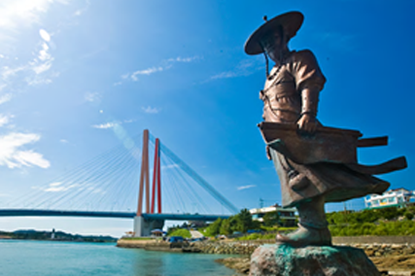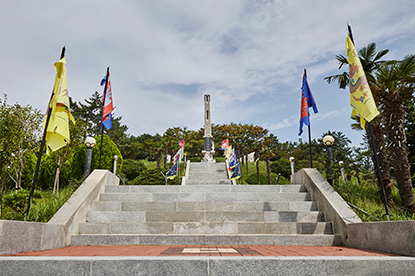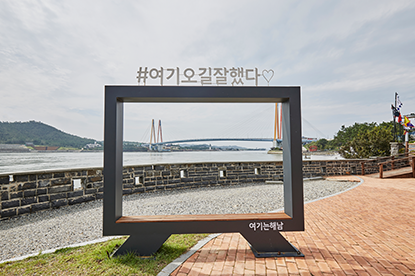Cultural Heritage Passport Tour
- Incheon International Airport PR Center (Traveler Center)
- Gaya Culture Route
- Gwandong Pungryu Era Route
- Baekje Antiquity Route
- Korean Temple Monasteries (Sansa) Route
- Korean Confucian Academy Route
- Prehistoric Landscape Route
- Mythic Landscape Route
- Folk Music Route
- Royalty Route
- Golden Era Route
Gochang, Namwon, Mokpo, Imsil, Jeonju, Jindo, Haenam
- Immerse yourself in the melodies of Namdo Sori
“Namdo Sori” is a branch of traditional Korean music known for its melodic compositions, dramatic singing, rich content, and a wide range of emotions the music portrays. Namdo Sori, which includes pansori, Minyo, Danga, Japga, and Nodongyo songs, refers to folk music from Jeolla-do, Gyeongsang-do, and parts of Chungcheong-do. In particular, the Minyo folk songs from Jeolla-do, which are famous for their excellent musicality, are often called “Namdo Minyo.” Jeolla-do, a Province that has been the cradle of culture and art since ancient times, has produced countless artists across a wide range of genres. The sounds handed down by these artists still live with us today upon adapting to the changing world from generation to generation. Learning a cultural heritage that is physically intangible in nature is an act of carrying on the legacy and heritage created through history. The gestures and sounds can teach us values that transcend time and build an emotional, cultural connection across generations.

The Folk Music Route is easy to access thanks to KTX stops in Jeonju and Mokpo, or you can take express buses from various parts of the country. When traveling between cities, make sure to check bus timetables if you want to use your time as efficiently as possible. You can use public transportation or drive your own car. Alternatively, you could consider renting a car in Jeonju or Mokpo. Please note train stations and bus terminals in the area have car rental companies available nearby.
Jeonju, Imsil, Namwon, Gochang
Flavors of Jeonju, Imsil, Namwon, and Gochang might just leave a lasting memory
-
Jeonju Kongnamul Gukbap
Jeonju Kongnamul Gukbap, one of the most popular Haejangguk-dishes in Korea, is a soup with bean sprouts and rice mixed in together. There are two types of Kongnamul Gukbaps. One is the fresh-cooked Kongnamul Gukbap where rice bean sprouts are mixed into a fresh soup, which is then brought to a boil, then an egg is added to the soup. The other is the “Toryeom” Kongnamul Gukbap, where a pre-cooked soup is poured onto the rice (Nambu Market Type). This Toryeom style is served with poached eggs separately.
-
Namwon Chueotang
Namwon Chueotang refers to a soup in which loach is cooked, ground whole, and boiled with green onions, dried radish leaves, green onion, red pepper, perilla, and soybean paste. Loach, which is rich in protein, vitamins, and minerals, has been known as a nourishing food since ancient times. It was mainly eaten in autumn, but today, it has become a dish you can enjoy year-round.
-
Imsil Cheese
Imsil, a mountainous region with a large dairy farming industry, is where the nation's first cheese factory was created. The soft and chewy Imsil Cheese made with the milk from cows raised in the pristine local environment is known for flavors that best suit the palate of Korean consumers.
-
Gochang Pungcheon Eel
Pungcheon Eels are eels caught downstream of the river flowing near Seonunsa Temple in Gochang-gun, where freshwater and seawater meet. The place is famous for its high salinity, which adds more flavor to the eels. Pungcheon Eels are mostly charcoal-grilled and are known for their chewy meat and savory, yet light and refreshing taste.
Mokpo, Jindo, Haenam
Flavors of Mokpo, Jindo, and Haenam might just leave a lasting memory
-
Mokpo Sebalnakji Octopus
The Sebalnakji Octopus gets its name from its small body and thin tentacles. It is a nourishing food rich in nutrients, and is often called the “Ginseng from the mud flats.” The Sebalnakji Octopus, caught in abundance near Mokpo, is famous for its chewy texture and sweetness. Locals say the Octopus tastes sweeter the more you chew it.
-
Jindo Hongju
Jindo Hongju is a unique alcoholic beverage that is produced by fermenting and distilling its ingredients, then putting the liquid through an elution process. The eluted liquid has a unique color, flavor, and scent, and is known as one of the three medicinal liquors since ancient times.
-
Mokpo Chinese Drum Sashimi
The Chinese Drum is one of the most popular fishes in the summer season. In particular, Chinese Drum sashimi is widely considered an expensive dish thanks to its light and refreshing taste. If you order Chinese Drum sashimi in Mokpo, you will get to enjoy its skin, air bladder, fins, sashimi, and a clear soup (or spicy soup).
-
Haenam Sweet Potato
Haenam, with a natural environment perfectly suited for growing sweet potatoes, is the nation's largest producer of sweet potatoes. Sweet potatoes produced in the red clay soul have been popular in Korea since ancient times thanks to their nourishing and sweet flavor. Haenam also offers processed foods with sweet potatoes, such as sweet potato rolls and sweet potato sweets. In particular, sweet potato bread made in the shape of a sweet potato is popular because it tastes good and looks fun at the same time.
Jeonju, Imsil, Namwon, Gochang
Cultural heritage festivals in Jeonju, Imsil, Namwon, and Gochang
-
Jeonju International Film Festival
Founded in 2000 as a non-competitive film festival with a handful of competitive categories, the Jeonju International Film Festival has carved out a unique niche in the world of international film festivals. Jeonju's motto is to introduce alternative works of contemporary film art and pioneering works of independent and experimental films. It also serves as a springboard for talented artists with the potential to grow into some of the best in the film industry, and supports creative experiments as well as independent works of art while giving filmmakers from all over the world a chance to meet and work together.
For more details, please check the festival’s official website below.
Website www.jeonjufest.kr
-
Night of Jeonju and Heritage Story
The Night of Jeonju and Heritage Story is a program where you can enjoy a great night out in beautiful Jeonju. From the early evening hours, the Hanok Village turns its Hanji lanterns on, breathing an air of classic beauty into its streets. The Night of Jeonju and Heritage Story gives you a chance to enjoy the culture and history of Jeonju with art pieces produced by young artists based out of Jeonju. Each year, the program showcases art across eight different categories.
For more details, please check the festival’s official website below.
Website www.jeonjunight.com
-
Jeonju International Sori Festival
The Jeonju International Sori Festival is a bona fide international festival for world music where you can feel and enjoy a variety of performances, including the performances by master-level artists who have gained worldwide fame in each field, all in one place without being biased or skewed to a specific music genre. With a strong foundation in Pansori, Korea’s signature style of traditional music, it breaks down barriers with world music.
For more details, please check the festival’s official website below.
Website www.sorifestival.com
-
Gochang Moyangseong Festival
The Gochang Moyangseong Festival is a cultural festival held since 1973 to celebrate the patriotism of our ancestors, pass on and develop local culture, and promote the pride and spirit of the people of Gochang-gun.
For more details, please check the festival’s official website below.
Website www.moyangseong.co.kr
-
Namwon Chunhyang Festival
Festival filled with love, the Namwon Chunhyang Festival! Head over to the Gwanghallu Pavilion in Namwon with your friends, loved ones, and family for the Namwon Chunhyang Festival.
For more details, please check the festival’s official website below.
Website www.chunhyang.org
-
Namwon Heungbu Festival
The Namwon Heungbu Festival is a local cultural festival hosted by Namwon-si since 1993. Seongsan-ri, Inwol-myeon, Namwon-si and Seong-ri, Ayeong-myeon are known as the birthplace of the folk tale Heungbujeon. It is said that Heungbujeon can be traced back to the folk tale of Park Cheomji and Chunbo, which has been passed down in the two villages for a very long time.
For more details, please check the festival’s official website below.
Website www.heungbu.or.kr
-
Namwon Cultural Heritage Night
The Namwon Cultural Heritage Night at the Yocheon Wolgung Square features a performance based on the love story between Gyeonwoo and Jingnyeo at Gwanghalluwon, a municipal government office used during the Joseon Dynasty, and other entertaining programs.
For more details, please check the festival’s official website below.
Website http://namwonnight.co.kr/
-
Imsil Pilbong Village Gut Festival
The Imsil Pilbong Village Gut Festival is a traditional cultural festival that honors the late “Pilbong” Yang Soon-yong, who created and spread what is now known as Pilbong Nongak (designated as a national intangible cultural heritage) across the country.
For more details, please check the festival’s official website below.
Website http://www.pilbong.co.kr/
Mokpo, Jindo, Haenam
Cultural heritage festivals in Mokpo, Jindo, and Haenam
-
Haenam the Great Battle of Myeongnyang Festival
The Great Battle of Myeongnyang Festival celebrates the brave spirit of Admiral Yi Sun-sin and Haenam’s local traditional cultural heritage with a maritime parade and programs at the site of the Great Battle of Myeongnyang, which remains a legend in world naval history to this day.
For more details, please check the festival’s official website below.
Website www.mldc.kr
-
Mokpo Cultural Heritage Night
Mokpo is the only city in Korea that conducted a comprehensive job of replicating the cityscape in Korea during what is known as the “enlightenment period” of Korea. The Mokpo Cultural Heritage Night gets under way during evening hours with cultural activities at cultural heritage sites in the old city center of Mokpo
For more details, please check the festival’s official website below.
Website https://mokponightroad.modoo.at/
-
Mokpo International Madang Art Festival
The Mokpo International Madang Art Festival was created to help promote goodwill and create a society where people can coexist in harmony and peace. The festival is structurally based on the Ssitgim and Shinmyeong culture that permeates Jeollanam-do’s local culture and art, and it offers a modern take on “Madang,” which represents the aesthetic values of Korea, and hopes to build a global community that embraces togetherness.
For more details, please check the festival’s official website below.
Website http://www.mimaf.net/
-
Jindo Culture and Arts Festival and Jindo Arirang Festival
For more details, please check the festival’s official website below.
Website https://www.jindo.go.kr/tour/tour/info/festival.cs?act=view&infoId=98
Course #1
- Gochang Pansori Museum
- National Intangible Heritage Center
- Gwanghalluwon Garden
- Training Center for Imsil Pilbong Nongak
Course #2
- Jindo National Gugak Center
- Mokpo Maritime Museum
- Usuyeong Tourist Sit
Immersive Pansori programs designed to stimulate your senses at the Gochang Pansori Museum
-
Address
100, Dongni-ro, Gochang-eup, Gochang-gun,
Jeollabuk-do -
Inquiries
063-560-8061
-
Opening hours
Summer: 09:00 ~ 18:00
Winter: 09:00 ~ 17:00
(Last admission 30 minutes before closing / Closed every Monday, New Year’s Day, Seollal, Chuseok) -
Stamp
Main gate at the Gochang Pansori Museum
-
Website
-
Directions
Take a bus bound for Gochang at Central City Terminal → Get off at Gochang Culture Terminal → Walk for 16 minutes
Pansori (National Intangible Cultural Heritage, UNESCO Intangible Heritage) refers to a story performed by a Soriggun (singer) and Gosu (drummer) with a mix of songs, narrations, and gestures delivered with a unique rhythm. “Pan” here means “a venue where people gather” or “a place where something happens.” “Sori” refers to natural sounds expressed through human voices. The Gochang Pansori Museum in Gochang-gun was built to carry on and advance the legacy and tradition of Pansori in Gochang, and also to give the general public a chance to appreciate local works of Pansori. The Museum was built where Shin Jae-hyo's old house used to be (Shin Jae-hyo’s old house was designated a national folk cultural asset). Shin Jae-hyo was a Pansori scholar, critic, and supporter, and largely recognized for his contributions to the world of Pansori. Inside the Museum, you can learn about the history, characteristics, art world, and genealogy of Pansori with photographs, models, videos, sound books, editorial collections, and records. The Museum also features relics that offer a glimpse into the life of Shin Jae-hyo, and a corner dedicated Gochang's most famous singers such as Jin Chae-seon and Kim So-hee. Behind the Museum is the old house that belonged to Shin Jae-hyo. Historians believe the house was built in 1850. The rustic thatched house that remains today was used as a guest house by Shin Jae-hyo. Shin Jae-hyo, who lived in the house until the end of his life, trained master singers, and edited and adapted the six Pansori works, including Chunhyangga, Simcheongga, Baktaryeong, Garujigitaryeong, Tokkitaryeong, and Jeokbyeokga.
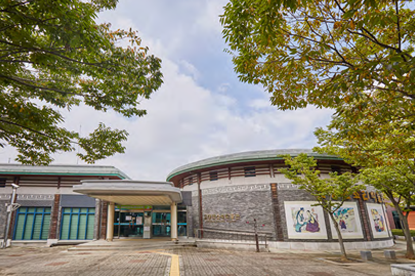
Provided by the Korea Cultural Heritage Foundation
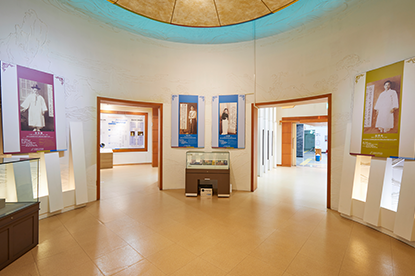
Provided by the Korea Cultural Heritage Foundation
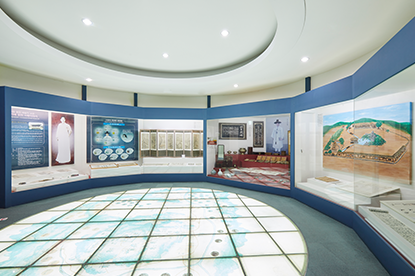
Provided by the Korea Cultural Heritage Foundation
 The Five Traditional Pansori Madangs
The Five Traditional Pansori Madangs
A Pansori work with an independent plot is called a Madang. Originally, there were twelve Pansori Madangs. Today, however, only the Chunhyangga, Simcheongga, Baktaryeong, Garujigitaryeong, Tokkitaryeong, and Jeokbyeokga remain. These five Pansori works are called the Five Traditional Pansori Madangs.









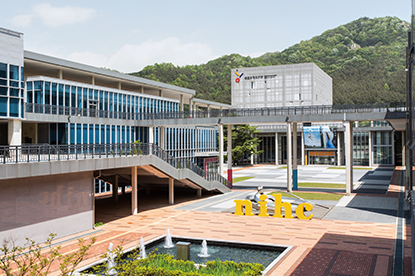
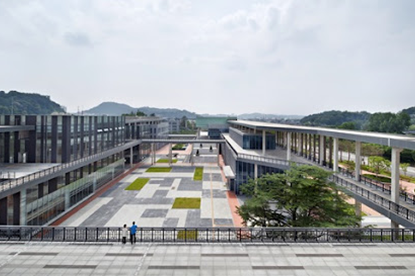
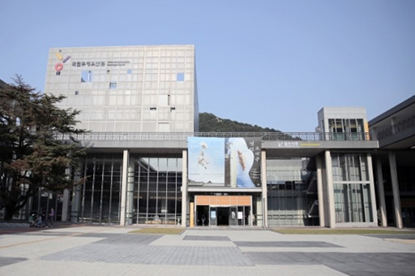
 Performance schedule
Performance schedule
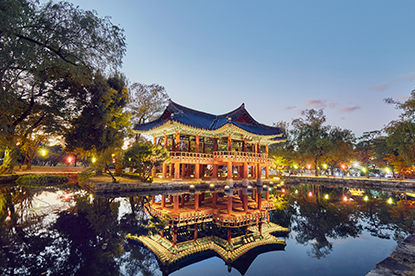
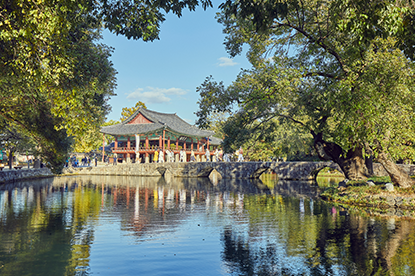
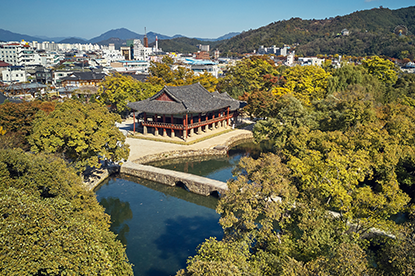
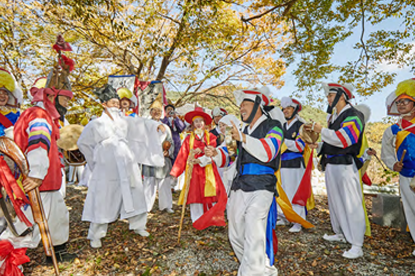
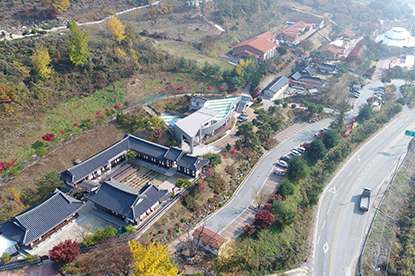
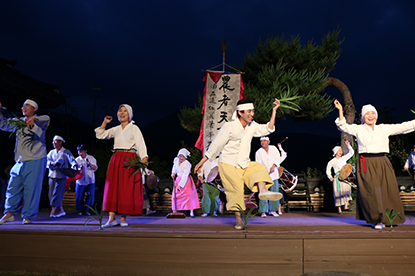
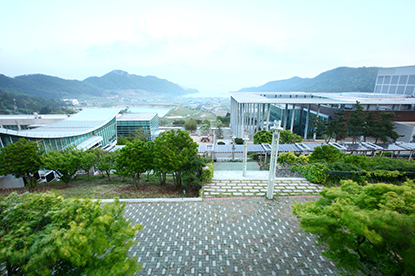
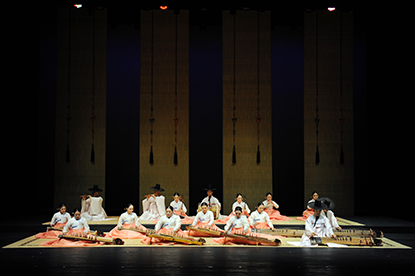
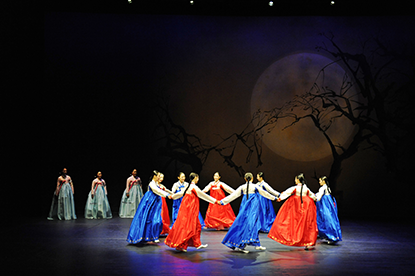
 Friday Gugak Program (free)
Friday Gugak Program (free)
 Arirang Village
Arirang Village
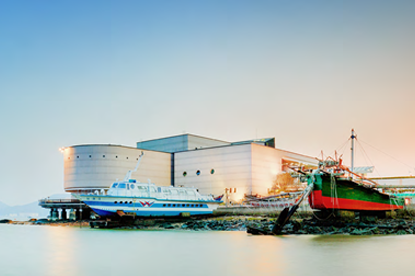
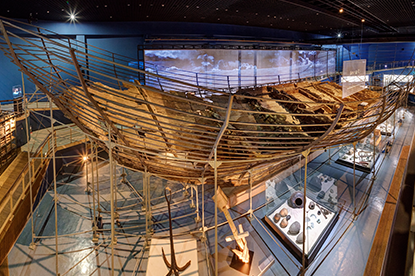

 National Research Institute of Maritime Cultural Heritage Mokpo Maritime Museum exhibition schedule
National Research Institute of Maritime Cultural Heritage Mokpo Maritime Museum exhibition schedule
